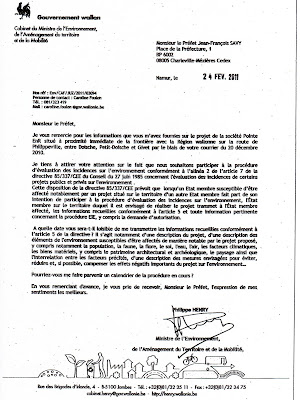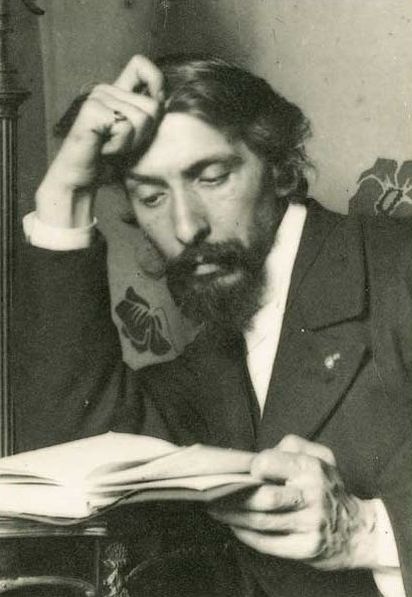Serafino Macchiati One of the brightest and most worthy representatives of the colony Italian art in France at the turn of the nineteenth century is also a great artist from the Marches, valid illustrator interesting literary events in the heat of the century publishing.
This is Seraphim Stained, painter and illustrator Camerino unjustly forgotten and neglected by critics, who, after beginning the hardships at home, gather widespread support in France where, thanks to the encouragement of Victor Grubicy and Giacomo Balla (which I do a portrait in 1900), it will have to find the ideal setting to give an original expressive language, managing to gain a highly important role of art in the context of European painting and graphics. Although
early in his career, some critics call it "Ferrara", was born in Camerino Serafino Macchiati January 17, 1860, but throughout the first place, and less fortunate, the first part of his artistic activity in Bologna and then to Rome.
Self-taught, will be in Bologna, where he attended the free school of the nude under the guidance of Luigi Busi, the local promoter to nineteen Macchiati debut in 1879 with a small canvas. He moved to Rome where he triumphed at the time the genre painting, impatient academic circles, not to yield to the prevailing taste bad, they "review" the illustration, with which it will get a quick and lasting success. So a happy
incursion in challenging environments Milanese publishing the early twentieth century: if the first cartoon made for some volumes of the publisher Sonzogno and Cordelia's Christmas Tales (1886) and The song of the children of Henry Fiorentino (1888), both published by Treves are still enough evidence debut stereotyped as weak as the design and workmanship, will be the series of drawings in two years of collaboration, between 1894 and 1895, will be published in La Tribuna Illustrated, "which will provide an opportunity to begin to assert their own personality, revealing how easy illustrator of modernity.
In Paris, where he moved in 1898 at the invitation Lemerre publisher who asked him to explain "Crime d'amour" by Paul Bourget (first of a dozen books that explain to Marcel Prevost, Armand Blanc, Edmond Rostand), Serafino Macchiati can better define your figure and iconographic gain in a short time the most extensive reputation, always working to improve their style.
These novels to contemporary subject and environment world find in him a fine and brilliant performer: the artistic personality of Macchiati states especially in the refined elegance of the sign and the reduction in authoritative exquisite vignettes in black and white scenes of social life and characterized by graceful figures consummate skill in the layout, in the sense of movement and live in a decorative style that never degenerates into affectation.
His illustrations are small masterpieces for the spirit that animates the scene, to penetrate the nature of the figures, the naturalness of the attitudes and expressions in the variety of types and in their secure identification, reveal the constant observation and analytical from the truth.
Apart from illustrating the participation of the Divine Comedy to the publisher Alinari of Florence (1902), the beginning of the century, all production will be allocated to foreign clients: in addition to the Parisian publishers Lemerre, Laffitte, Hachette, Arthema Fayard, will work with French magazine Figaro Illustré "," Je sais tout, "" Lectures pour tous "and German" Illustrierte Zeitung ". The French public
widely appreciated his skills as an artist full: Parisian high society as an illustrator, art director (Cyrano de Bergerac) and excellent painter of landscapes and portraits, which moves with passion at all times free from the commitments of the designer.
and the predilection for painting is not unjustified, given that allows him to make a series of works of recognized value and well executed: mostly portraits and landscapes of poetic and dreamy tone. The document participation in
Biennials of 1901 and 1907 and, most significantly, the retrospective dedicated to him in the same venue in 1922.
Young and the height of his fame, Stained died in Paris Dec. 12, 1916, suffering from a sudden disease, leaving the Italian critics regret not recognize him at home the fame that his objective was the value of insurance, as is clear from the obituary on the "Emporium" in January 1917.
's time to discover an artist from the Marches and attractive complex, somewhat neglected, both for short and an artistic life that has found its apex outside the Marche, is the tendency not to fully appreciate the value of the illustrators.
So it seems only right to pay the debt contract with a Marches of international renown, at the very moment when the taste is now also open to those aspects of art traditionally considered 'minor', to finally recognize the absolute Serafino Macchiati modernity and an awareness of art making, in perfect keeping with the spirit of his time.
http://www.identitasibillina.com/rivista_n1/pagine_rivista_ita/da_cam_a_parigi.html

















